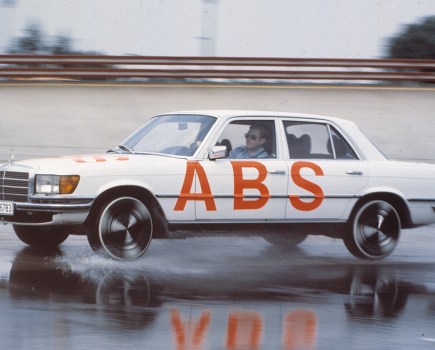The earliest examples of carburettors date back to the 19th Century, with the carburettor being one of the first patents logged by Karl Benz as he worked to create an internal combustion engine for his 1885 Motorwagen. And yet, although fuel-injection has now all but replaced carburettors as a means of metering fuel, carbs were still in regular use on production cars until surprisingly recently. In Australia, for example, it wasn’t until 1999 that the Suzuki Swift stopped using carbs. Elsewhere, certain Ladas used carbs right up until 2006.
So, what is it exactly that a carburettor does? Well, as we know already the internal combustion engine is fuelled by a precise mixture of air and petrol. It is the carb’s job to mix the correct amount of air with the correct amount of petrol. This enables the engine to run properly – allowing the engine to start easily, accelerate without hesitation, cruise economically and not to stall in traffic.
Air is drawn into the combustion chambers of an engine because of the partial vacuum that is created when its pistons move down the cylinders on the induction stroke. The amount of air drawn in is determined by engine speed and the position of the throttle valve, which is in turn controlled by the accelerator pedal – as it’s depressed, the throttle valve opens.
Petrol for the carburettor is supplied from the fuel tank by the fuel pump, which pipes petrol up into a reservoir in the carburettor known as the float chamber. Here, petrol is maintained at a constant level by means of a float-operated valve in order to ensure a ready supply of fuel.
Petrol joins air in a narrow-throated passage known as the venturi (or choke). This works on the principle that as the speed of an airstream increases, its pressure drops. When air flows through the narrow part of the venturi, its speed increases and it is in a region of low air pressure that petrol is sucked into the airstream from the float chamber by means of a jet.
However, because air and petrol have different properties – the faster air flows the less dense it becomes, whereas petrol remains the same density regardless of its rate of flow – and because air and petrol must be mixed by weight – roughly 15 parts air to one part petrol – a means of altering the air-to-petrol mixture’s strength is needed to prevent it from becoming progressively so rich that it is no longer able to burn in the cylinders.
In a fixed-jet carburettor, this is achieved by mixing some of the air with the petrol before it leaves the jet. On most fixed-jet carbs, this type of air correction is by means of a perforated tube (known as the emulsion tube), which automatically weakens the mixture by diluting it with air before it enters the venturi. The size of the main jet feeding the air/petrol mixture into the venturi is usually designed to provide the relatively weak mixture required for economic cruising.
So, in order to supply the additional fuel needed for acceleration, the fixed-jet carburettor is fitted with an accelerator pump, which consists of a well filled with fuel and fitted with a spring-loaded plunger or diaphragm linked to the throttle valve. When the throttle is opened, the fuel is discharged through a separate passage into the venturi. Likewise, when the throttle is closed, petrol and air are supplied through a separate idle circuit with a progression hole.
Regardless of the route the air/petrol mixture takes through the carburettor, it will pass the throttle valve. At which point the mixture will enter an area of partial vacuum created by the piston suction, which causes the petrol droplets to evaporate – the rate of evaporation depends on the degree of vacuum in the inlet manifold, which, as we’ve already mentioned, is determined by engine speed and the position of the throttle. The inlet manifold then distributes the mixture equally to the intake valves.
In order to start the engine from cold a far richer air/petrol mixture – consisting of between one and three parts petrol to one part air – is needed. This is provided by closing a strangler (or choke flap) by means of the spring-loaded butterfly valve, operated by the dashboard-mounted choke control. By closing the strangler, the air speed through the venturi is lower, which allows only part of the petrol to vaporise. It is important to open the strangler once the engine has warmed to avoid undue wear of the cylinder bores caused by liquid fuel running down the cylinder walls. On later classics the choke can be operated automatically by means of a bi-metal spring, which expands as it heats, opening the choke flap as it does.






